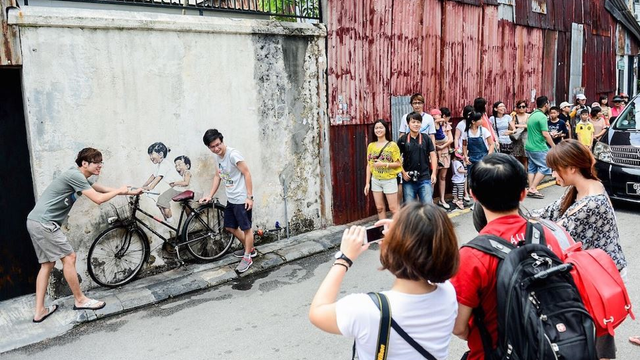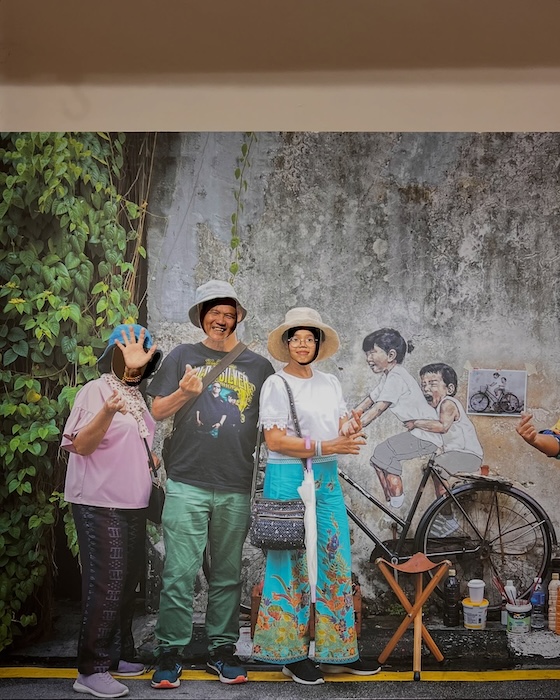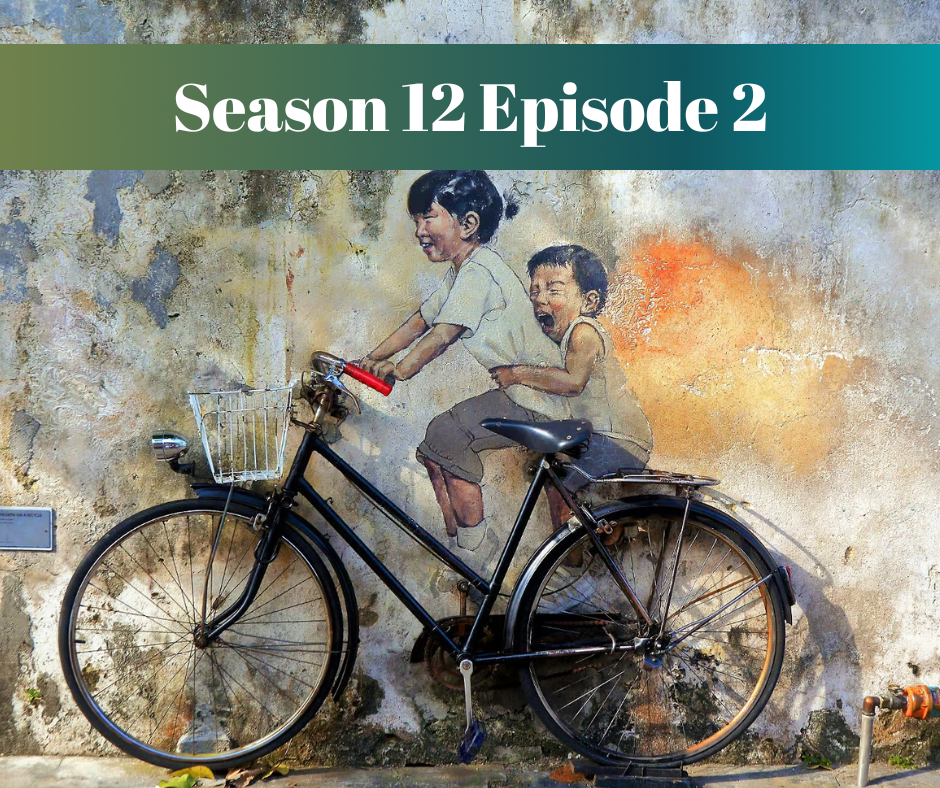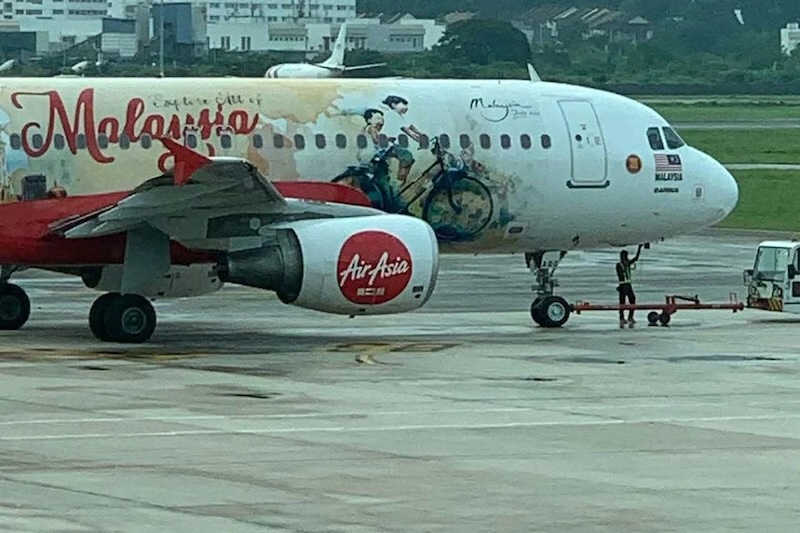This editorial on street art and intellectual property was originally published in my street art newsletter, Beyond the Walls, which lands in inboxes on the 1st of every month with reflections and unexpected finds. This excerpt is from the February 1, 2025, edition. Subscribe here to receive future issues.
Street Art, Intellectual Property and Commectialization
You might have seen on Instagram the campaign launched by street artist Ernest Zacharevic against AirAsia for featuring his iconic Kids on Bicycle mural on their airplanes without his consent.
When I saw this announcement, I reached out to Ernest—whom I met many years ago—to learn more about the legal action he’s taking and hear his perspective on the broader implications of this issue.
In fact, this incident is not an isolated one. It reflects a larger, ongoing issue where street artists must navigate the exploitation of their creations for commercial gain without proper credit, consent, or compensation.
Beyond this specific case, it raises deeper questions about the commodification of art, the legal gray areas surrounding street art, and the complex interplay of intellectual property and commercialization.
The Corporate Exploitation of Street Art
Created in 2012 as part of the George Town Festival, alongside six other works, Ernest Zacharevic’s Kids on Bicycle mural has become a beloved cultural emblem of Penang, inseparably linked to the city’s identity and vibrant tourism scene. My first question for Ernest was how it feels to see tourists queuing up to capture photos with his creation.

I tend to move on from my paintings once I complete them. Sometimes they require my attention, but it’s nice to let them live their own life. My opinions about my work evolve over time, but the pieces themselves often take on a life of their own and remain part of public consciousness far beyond my involvement.
Ernest Zacharevic

Yet, AirAsia’s unauthorized use of this artwork highlights a power imbalance where corporations extract value from an artist’s labor and cultural contributions while disregarding their intellectual and moral rights.
In 2013, I received a promotional email as part of a marketing email blast from AirAsia featuring my artwork as the centerpiece. I immediately contacted them, asking them to discontinue the campaign and seeking clarification. However, I was informed that the campaign had already been approved and was beyond my control to stop. The most frustrating part was witnessing this behavior repeated, even after I made an effort to communicate with them and express my concerns. It highlighted a lack of respect for artists and their intellectual property.
Ernest Zacharevic
Moral Rights and the Artist’s Reputation
The unauthorized use of an artist’s work infringes on their moral rights, particularly the fundamental right of attribution. Without proper credit or consent, artists lose control over how their work is presented and interpreted, which can damage their reputation and distort the original meaning of their creation.
The right of attribution is paramount. In fact, when I asked Ernest what the proper approach from AirAsia—or any company—would have been to handle this situation, he said:
At the time, a simple apology and proper credit would have gone a long way in acknowledging the value of my work. It could have even opened the door to a meaningful and creative collaboration, benefiting both parties.
Ernest Zacharevic
The Legal Gray Area of Street Art
Street art often exists in a fragile legal gray area. Created in public spaces—often without formal authorization—it blurs the boundaries between private property, public accessibility, and ownership.
This ambiguity is frequently exploited by corporations and advertisers, who use the public nature of street art as a convenient justification for unauthorized commercial use, disregarding the rights and efforts of the artists behind these works.
As Ernest points out, this behavior is just one of the many sly tactics corporations use to sidestep accountability—a calculated way of operating that prioritizes profit over ethical practices. When I asked him about the systemic issues within the industry that make such exploitation possible, he shared:
Likely the need to push out campaigns and meet their KPIs, and lack of proper processes to stop, question, and check. “Do first, deal with it later” kind of thinking. When problems do arise, large corporations have management and legal departments. For them, it’s just another part of the job to engage in negotiations and disputes; but for artists, it can be a huge drain on time and resources—time that could be better spent creating art and contributing to culture. The imbalance in resources often discourages artists from pursuing justice.
Ernest Zacharevic
Cultural Appropriation of Street Art
Beyond the legal implications, unauthorized commercialization of street art raises questions of cultural appropriation. Works like Ernest Zacharevic’s mural are not only artistic expressions but also cultural artifacts tied to specific communities and contexts. When corporations repurpose such works for profit, they strip them of their original meaning and devalue their cultural significance.
Seeing your work misused can be disheartening, but it’s crucial to stay focused on creating and growing. With persistence and dedication, [emerging artists] can build a body of work that speaks for itself and eventually overcome such challenges. Collaborating with agencies or legal experts can also help protect your rights as you progress in your career.
Ernest Zacharevic
The Larger Issue: Commodification vs. Authenticity
Street art, by its very nature, often critiques consumerism, capitalism, and the commodification of public spaces. Its visual appeal, however, has made it a prime target for branding and marketing, turning once-subversive works into commercial tools. This commodification risks reducing street art to mere aesthetic value, erasing its cultural and social critique.
Furthermore, these cases underscore the imbalance of power between individual artists and corporations. Companies have vast legal and financial resources to prolong disputes, leaving artists with little choice but to accept inadequate compensation or abandon their claims altogether.
This experience taught me how resource-intensive legal disputes can be, particularly for emerging artists. It underscored the importance of focusing on my creative process and seeking professional guidance for future challenges. Navigating the legal world as an artist is extremely complicated. Intellectual property disputes can feel like an uphill battle, full of intimidation and unnecessary roadblocks. It’s vital to seek legal advice early on and to have systems in place to protect your work. At the same time, I believe in focusing on constructive dialogue and systemic changes to support artists’ rights and create a more equitable industry.
Ernest Zacharevic
Ernest Zacharevic’s campaign against AirAsia is not just about his mural—it’s a call to action for the entire artistic community. It highlights the broader vulnerabilities of street artists in a world where public art is increasingly commercialized and commodified.
I’ve learned that many artists face similar challenges, and it’s disappointing how common this behavior is among corporations. There must be tighter laws and regulations around intellectual property rights, especially in visual arts. While industries like music, film, and architecture have agencies and institutions to protect creators, visual artists are often left to fend for themselves. That needs to change.
Ernest Zacharevic
By addressing these challenges and advocating for stronger protections, we can ensure that street art continues to thrive as a medium of cultural expression and public dialogue, rather than becoming another resource for unchecked corporate exploitation.

